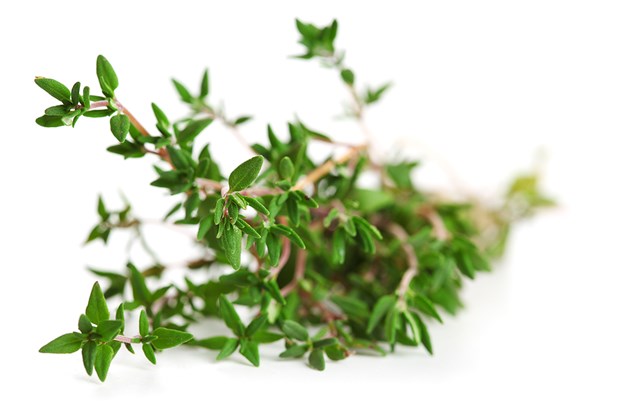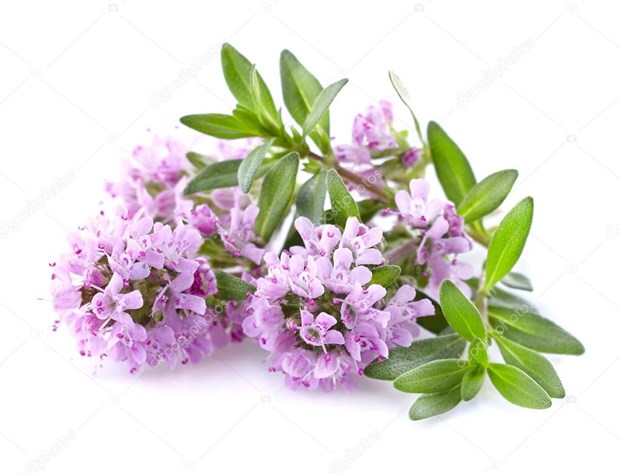You wouldn’t know it just by looking at them but the small leaves of thyme are full of flavor and potent antiseptic properties. This has made thyme a preferred herb in the medical community as well as in kitchens.
Thyme
has long been used in Mediterranean, Middle Eastern and North African cuisine
and is popular in North America. Let’s take
a look at what makes thyme a wonder herb.

Photo of fromyourinsideout.com
Background
Thyme
is a shrub with a woody stem and tender small leaves that has been around for
more than 5,000 years. Its botanical name is thymus vulgaris, was derived from
the Greek word thymon, which means to fumigate. Thyme grows wild in the
Provence region of France, where it is believed to have originated. Ancient
Egyptians used it in mummification while the Greeks used it as incense in
temples. The ancient Greeks believed bees that fed on thyme flowers produced
the sweetest of all honeys. Romans added
thyme to their baths in hopes of promoting vigor.
Varieties
The
most commonly used variety of thyme is the French one, which explains the many
uses French cooks have for this fragrant herb. More than one hundred varieties
exist including lemon thyme, orange thyme, silver thyme and anise thyme.

Photo by Gardening Know How
Uses for thyme
The
French use thyme liberally. It is one of the ingredients in the spice mix
herbes de Provence the bouquet garni, herbs wrapped in cheesecloth which are added
to soups and stocks and removed at the end of the cooking process. Sprigs of
thyme are added to famous French dishes like the seafood stew bouillabaisse and
coq au vin.
Thyme
is also very popular in North African and Middle Eastern cuisine. The herb is
the principal component of the spice mix za’atar, which also contains toasted
sesame seeds, sumac and salt. Of course, thyme is also one of the most popular
herbs used in North American cuisine. It is added to everything, from roasted
chicken to clam chowders.
How to buy thyme
Ideally,
you would keep a pot of thyme by your windowsill, just like you would basil. If
you don’t opt for growing your own, you can always buy some at the grocery
store. When buying fresh thyme, look for evenly colored leaves and a strong
aroma.
Thyme
is very popular in its dried form, which makes it even more pungent. Dried
thyme is actually cheaper than the fresh variety, when compared by weight. When
buying dried thyme look for leaves that are grayish green and packaging that is
free of debris.

Photo of Depositphotos.com
Storage
Wrap
fresh thyme in a damp paper towel and store in the refrigerator. It should keep
fresh for about a week. Dried thyme will keep for over a year if stored in an
airtight container and tucked away in a dark cupboard.
Benefits of thyme
Don’t
be fooled by thyme’s small leaves. They are full of thymol, a powerful
essential oil that is packed with antiseptic properties. This makes thyme ideal
in fighting a myriad of infections and diseases including bronchitis,
gingivitis and hypertension.
By FDL